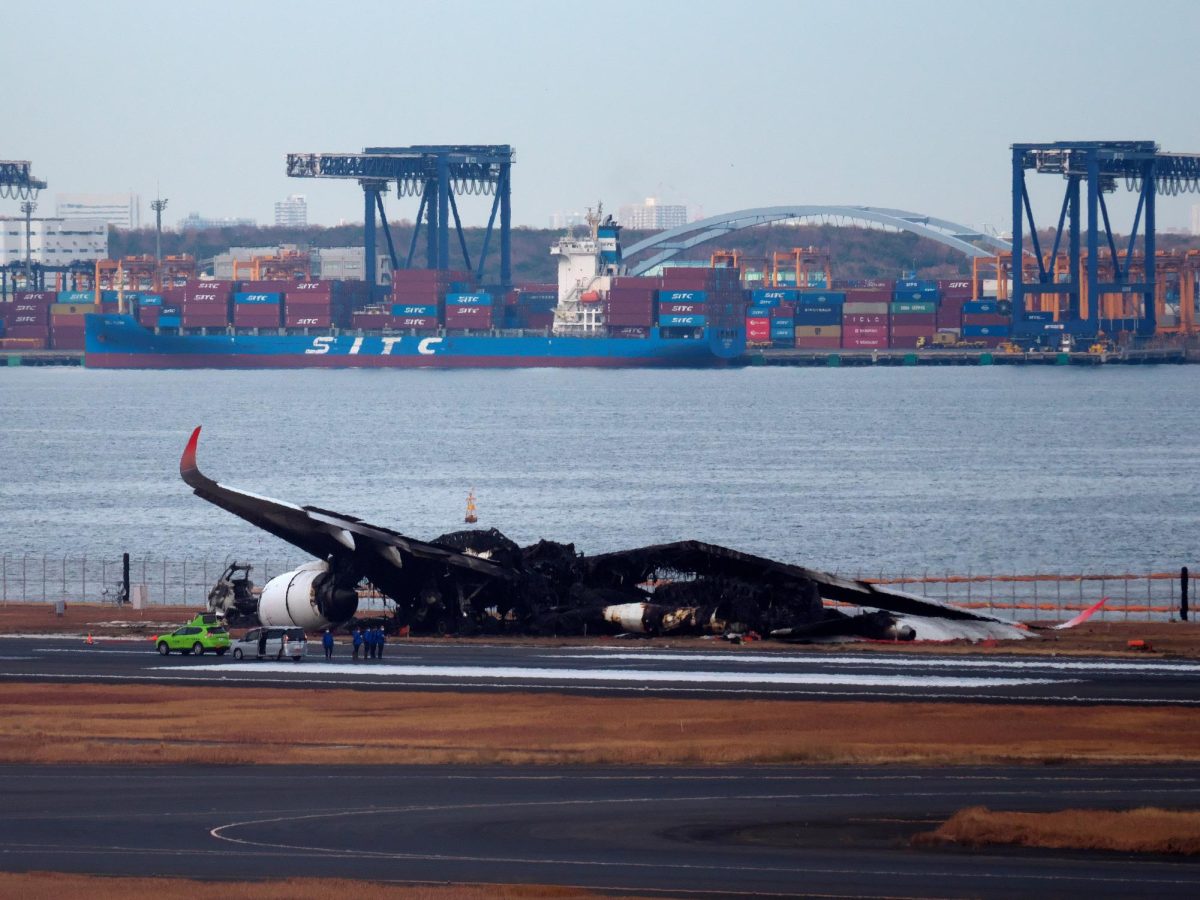On Tuesday, January 2nd, a Japan Airlines plane carrying around four hundred passengers crashed into an earthquake relief aircraft and burst into flames on its course from Sapporo to Haneda, Japan. According to witnesses of the crash, the collision was almost invisible compared to the large, fiery flames surrounding the plane’s destroyed infrastructure, causing extreme chaos.
The unique aspect of JAL Flight 516 that surprised millions of avid news-watchers was not the logistics of the crash itself, but the fact that all 379 passengers on the flight were safely evacuated with minimal harm within eighteen minutes and a comparatively small number of flight attendants perished during the collision.
JAL Flight 516 is not the first example of Japan’s effective emergency response to crashes. Japan Airlines follows a very strict, regimented emergency protocol when faced in similar high-stress situations to ensure that all passengers are kept safe and unharmed.
The first rule attendants and pilots follow is panic control, where they use direct, short commands to ensure that passengers do not panic. Throughout this process, they assess the situation and see whether the emergency exits are accessible. Afterward, the pilots and attendants direct passengers down the “emergency chutes,” which guide them to safety away from the collision’s damages. Fortunately, according to Reuters, “all cabin attendants get trained once a year on evacuation procedures, simulating various scenarios such as what to do when they cannot communicate with the cockpit,” training them for all possible scenarios where the flight could go wrong. The rigorous, consistent training ensures that the staff are well-trained on evacuation procedures and can ensure that the process is as seamless as possible and no lives are lost. The JAL’s Plane, Airbus A350, also featured unique system designs allowing for a seamless escape route.
Unexpectedly, there was significant controversy around whether Japan Airlines’ success in evacuating its passengers was simply luck or the result of their rigorous training. According to WSJ, the Federal Aviation Administration specifies that evacuation time should be under 90 seconds total to ensure that the well-being of the passengers is prioritized. Sara Nelson, international President of the Flight Attendants CWA, clarifies, “the 90 second rule is there for a reason, because that aircraft can obviously be incinerated in seconds.” Considering that Japan Airlines took 18 minutes for full evacuation due to “limited usable exits, high passenger density, poor visibility because of smoke, and technical difficulties,” many officials felt that their success should not have been praised, but rather used as a cautionary tale that luck sometimes runs out.
On the other hand, other officials claimed that the crew’s rapid assessment and fast action under the circumstances served as a great case study for other airlines to learn from, especially considering that the aircraft’s communication system malfunctioned and the pilots were unable to communicate with the passengers in an easy manner. This forced them to resort to the old-fashioned ways of yelling in a modulated tone to ensure that the passengers were not too panicked.
Japanese Airlines estimated that the disaster would result in a loss of around 15 billion yen, or 105 million dollars, for both the plane structure and covering damages for passengers.
The loss of monetary support as well as loss of trust from investors and potential passengers has progressively decreased JAL’s share values, severely depleting the company’s initial good standing and positive experiences. Additionally, the delay due to the crashes and the corresponding anxiety surrounding flights led to a temporary shut down at the airport, creating more havoc for passengers, attendants, and pilots alike.
As a whole, JAL Flight 516 on the Airbus A350 has brought up many questions about whether current evacuation standards are adequate enough to ensure passenger survival and whether pilots and attendants should attend more rigorous training under realistic conditions. Although officials still disagree about whether the procedure was effective or not, the loss of the vehicle still serves as a warning sign that safety measures need to be reevaluated as new landscapes and routes are explored. On a positive note, though, the pilot and attendants’ high success rates with passenger safety is a primary example of how staff were able to stay calm during pressure and at least some parts of the training are working effectively.







